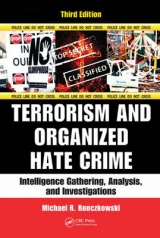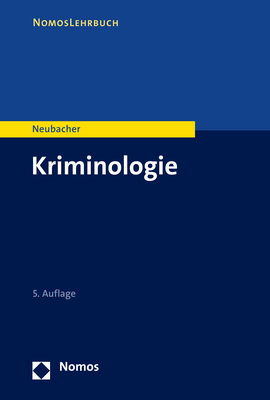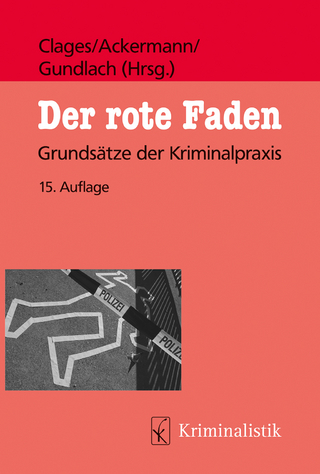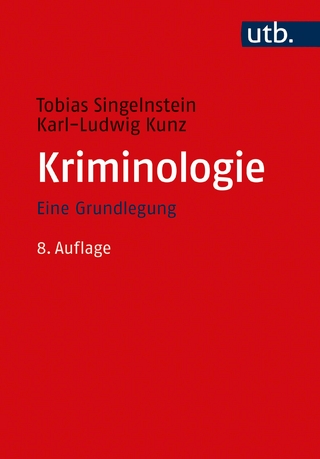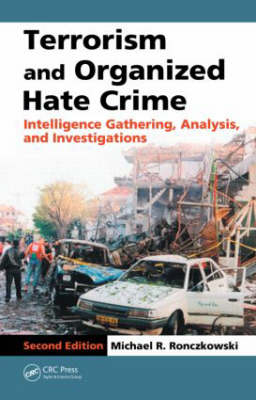
Terrorism and Organized Hate Crime
Crc Press Inc (Verlag)
978-0-8493-7829-4 (ISBN)
- Titel erscheint in neuer Auflage
- Artikel merken
Traditionally, law enforcement agencies react to isolated crimes in insulated jurisdictions. With the rise of terrorism, law enforcement agencies can no longer afford to operate blindly. The only way to maintain an edge on this nebulous and insidious enemy is through proactive intervention. Law enforcement must gather good raw data, transform it through trained analysis, and communicate high quality intelligence to every relevant agency.
Extensively updated and expanded, Terrorism and Organized Hate Crime, Second Edition prepares law enforcement analysts and administrators in the fight against terrorism. The author draws from his substantial experience in analytical intelligence, both in the field and as a nationally recognized instructor. Packed with new case studies and detailed scenarios, the book illustrates the best ways to learn from previous attacks. It stresses the importance of producing high quality, usable intelligence from raw data, and teaches proven methods of interpreting that intelligence to anticipate terrorist behavior.
New in the Second Edition: Examines religious connections between Islamic Sects and extremist organizations such as Hamas, Hezbollah, Wahhabii organizations, and the Muslim Brotherhood
Outlines methodology and parameters of intelligence gathering by focusing on pre incident indicators used to anticipate and identify behavior patterns
Highlights the vulnerability of transportation systems including planes, trains, ships, and personal vehicles
Explains how modern technology and the Internet are exploited by terrorists and used by law enforcement to track them
Updates a glossary of terrorist terminology with Cyber and Islamic terms
Terrorism and Organized Hate Crime, Second Edition provides the necessary framework for law enforcement and intelligence agencies to make fact-based assessments and implement dynamic and flexible strategies to combat the multifaceted nature of local, regional, national, and international terrorism.
A Need for Understanding and Analysis
The mission
Intelligence analysis units
Defining analytical positions and roles
Intelligence disciplines
What is homeland security and terrorism analysis?
Understanding what needs to be analyzed
Keys to analyzing
Deterrence, prevention, arrest, and target hardening
Deterrence
Prevention
Arrest
Target hardening
Understanding and Defining Terrorism
Defining terrorism
Defining terrorist activity
Forms of terrorism
Political terrorism
Ecological terrorism
Agricultural terrorism
Narco terrorism
Biological terrorism
Cyber terrorism
History and roots of modern terrorism
The evolution of domestic terrorism
Known domestic terrorist groups
Domestic terrorism
Organized hate groups and crimes
Role of organized hate groups in domestic terrorism
What is a terrorist?
Terrorist vs. street criminal
Differences between typical street criminals and terrorists
September 11, 2001 — subjects, criminals, or terrorists?
Understanding the religious connection
Islamic Extremism
Islamic Sects
Terrorism structure and management
Homeland Security and Analysis
Homeland security defined
Homeland security advisory system
Low condition (green)
Guarded condition (blue)
Elevated condition (yellow)
High condition (orange)
Severe condition (red)
Homeland security and analysis
The USA PATRIOT Act
Importance of finances
Hawala
Dealing with terrorism
Law enforcement concerns
Coordination, training, and awareness
Working the Puzzle One Piece at a Time — Learning to Anticipate Behavior
Data set challenges
Names and addresses
Data tools
Identifying what is needed
Forms of analysis that can be used to identify the missing piece
Use of calendars and significant dates in your analysis
When is 9/11 not 9/11? — depends on the calendar used
Dates of terrorism significance
Learning from past behavior
Looking for SKRAM
Recruiting opportunities
Prisons — recruitment and communication
Ability to communicate from within
Gangs — today’s street terrorists
MS 13 and SUR 13
Music — another means to recruit
Gathering Information, the Key to the Process
Intelligence gathering
Role of the first responder
Crimes and incidents that may yield information or links
Stolen identities
False identification
Counterfeiting of goods
Illegal trafficking of cigarettes
Misappropriation
Cargo crimes
Suspicious vehicles
Found or abandoned property
Gathering limitations and restrictions
Tips
Intelligence gathering and information interpretation
Evaluating the information used
Enhanced Analysis: Transforming Information into Intelligence
Analyzing: transforming information into intelligence
Analytical and investigative variables
Components of a group or organization profile
Web sites and other resources
Macro-Micro-Macro continuum
Link analysis charts
Association and directional matrixes
Event flowcharts
Heuer’s analysis of competing hypotheses (ACH)
Assessing the threat
Vulnerability assessment
Spatial referencing and its use in homeland security analysis
Range of GIS uses
Preparation and planning
GIS linking
Additional benefits of GIS
Identifying potential targets
Dissemination of intelligence
Commonly used analytical reports
The Threat: the Future is Here Today — Learning from the Past
Transportation targeted
Transportation and terrorism
The IRA campaign against transportation
Planes, trains, and automobiles — but there are more
United States: terrorism and transportation
Symbolic government targets
Notable terrorist cases and attacks with a transportation nexus other than 9/11
Aviation (Figure 7.1)
PFLP — The masters of airplane hijacking
Pan Am 103
Pre incident indicators
Richard Reid
Maritime (Figure 7.4)
Achille Lauro
USS Cole
Buses and trains/railways
Israel Bus 405
London 2005
Tokyo 1995
Tokyo’s Subway System
Aum Shinrikyo
Pre-incident indicators
Highlights of Aum in other countries
Aum Today
Madrid 2004
Operational factors
Trucks, cars, vans, taxis, limos, and rescue vehicles
Khobar Towers
Pre-incident indicators
Embassy — Nairobi, Kenya
Embassy — Dar es Salaam, Tanzania
Pre-incident indicators
Bicycles
Summary of recent transportation targets
Use of suicide bombers
Who are the bombers and their groups?
What can you look for?
Homegrown terror — learning from others
Expanded details
Iyman Faris
Jose Padilla — aka The Dirty Bomber
William Morgan — Cuban Revolutionary
Cases for groups found in the United States and abroad
Lackawanna Six
Portland Seven
Northern Virginia
IAP
Jamaat al-Fuqra and the Muslims of America
Coming to the attention of law enforcement
The JUF and MOA today
Educating, recruiting, and funding
Other Notable cases
Charlotte Hezbollah Case
Birth of the cell
Making the case
Bali Case
Case specifics
What the Future May Hold
Foreign-based terrorist influence
Groups, movements, and ideologies with a presence in the United States
Hezbollah
al-Gama’a al-Islamiyya
Hamas (Islamic Resistance Movement)
The Muslim Brotherhood Movement (Hizb al-lkhwan al-Muslimun)
Wahhabiism
Wahhabi organizations in North America
Wahhabi thinkers
Means of support
Cyberterrorism
Defining cyberterrorism
Spectrum of cyber conflict
Using IP address and e-mails in analysis
Some Internet problems that might come your way
Finding information in an e-mail
E-mail addresses
What is a header?
What is an IP address?
Understanding IP addresses
More about that IP address
No message, no extended header, no IP
Tracing an e-mail address to an owner
Does your target have a web page?
How do I trace a web address?
Bioterrorism and weapons of mass destruction (WMD)
The past, present, and future
Conclusion
Expanding horizons through media outlets
Muslim/Arab Internet news sites and resources
Appendix A Domestic-based terrorist organizations
Appendix B “Patriot” groups in the United States
Appendix C Symbols of hate
Appendix D Foreign-based terrorist organizations
Appendix E Explosive materials
Appendix F Homeland security state contact list
Appendix G Publication references
Appendix H Government legislative references
Appendix I Glossary of terminology
Index
| Erscheint lt. Verlag | 14.11.2006 |
|---|---|
| Zusatzinfo | 75 Illustrations, black and white |
| Verlagsort | Bosa Roca |
| Sprache | englisch |
| Maße | 156 x 235 mm |
| Gewicht | 680 g |
| Themenwelt | Recht / Steuern ► Strafrecht ► Kriminologie |
| Sozialwissenschaften ► Politik / Verwaltung | |
| ISBN-10 | 0-8493-7829-X / 084937829X |
| ISBN-13 | 978-0-8493-7829-4 / 9780849378294 |
| Zustand | Neuware |
| Haben Sie eine Frage zum Produkt? |
aus dem Bereich
